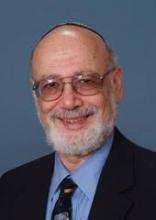At this point in the FEBSTAT study, the MRI and EEG study results cannot fully clarify whether FSE results in damage to the hippocampus and later epilepsy, or whether children with hippocampal abnormalities are more likely to present with FSE. However, it is already clear that while children with hippocampal abnormalities may be more susceptible to prolonged febrile seizure, these can result in acute injury.
The researchers conduct MRIs and EEGs on all subjects at the predetermined follow-up points, which will help reveal evidence of injuries or abnormalities that may have been undetectable at baseline. At 5 years, investigators collect extensive data on cognition, memory, executive function, attention, and behavior and psychiatric morbidity, in addition to imaging. "Our hypothesis is that when 5-year follow-up data are complete, kids with smaller hippocampi will have memory impairment," said Dr. Shinnar, lead author on the MRI study and coauthor on the EEG and HHV studies.
Dr. Shinnar said that one goal of the prospective cohort study is to identify biomarkers that will be useful in indicating preventive therapies for the children most at risk. Right now, he said, prophylaxis would be limited to antiseizure drugs; however, "the hope is that if we can identify that if you have this MRI or that EEG and are determined to be at high risk, you can find some agent that you can give for a couple weeks and prevent the development of epilepsy."
"The NIH has just funded a planning grant in which they’re testing agents in animals to prevent epileptogenesis," Dr. Shinnar said. "We are going to provide them some data from FEBSTAT to assist the modeling. There is a lot of interest in developing an agent that will prevent epilepsy, but of the candidate agents, none has so far passed muster."
The HHV study offered another clue to a potential route of intervention. HHV-6b and HHV-7, both found to be common in FSE, have potential for reactivation after primary infection. Evidence of infection with HHV-6b or HHV-7 was present in 85% of the cohort, with viremia in 32%.
What the FEBSTAT team still doesn’t know, Dr. Shinnar said, "is whether HHV-6b is a common cause of high fever in young children and therefore of febrile status, but that nothing about it could cause further epilepsy down the road; or whether it is a common cause of fever but because of the properties of virus is more likely to cause you to have status. We’re adequately powered to answer these questions, but you’ll have to tune in 10 years from now." A long-term aim of the FEBSTAT study is to determine whether FSE due to HHV-6 or HHV-7 infection is more likely to result in hippocampal injury, hippocampal sclerosis, and temporal lobe epilepsy than FSE without HHV-6 or HHV-7 infection.
The long follow-up of the cohort, which is powered to withstand some attrition over time, should prove one of its greatest strengths. The first 10-year data will be collected next year, and hopefully will reveal even more about the role of hippocampal injury, hippocampal abnormality, and HHV-6b and 7 in the pathogenesis of epilepsy.
"God and NIH willing," Dr. Shinnar said, he’ll be around for the 15-year results, by which time many of his earliest recruits will be headed off to college.
Dr. Shinnar disclosed past service on an advisory board for King Pharmaceuticals, and past financial relationships with Questcor, Sunovion, Eisai, Neuronex, and UCB. Several of Dr. Shinnar’s coinvestigators on the EEG and MRI studies also disclosed past and ongoing financial relationships with pharmaceutical manufacturers.


